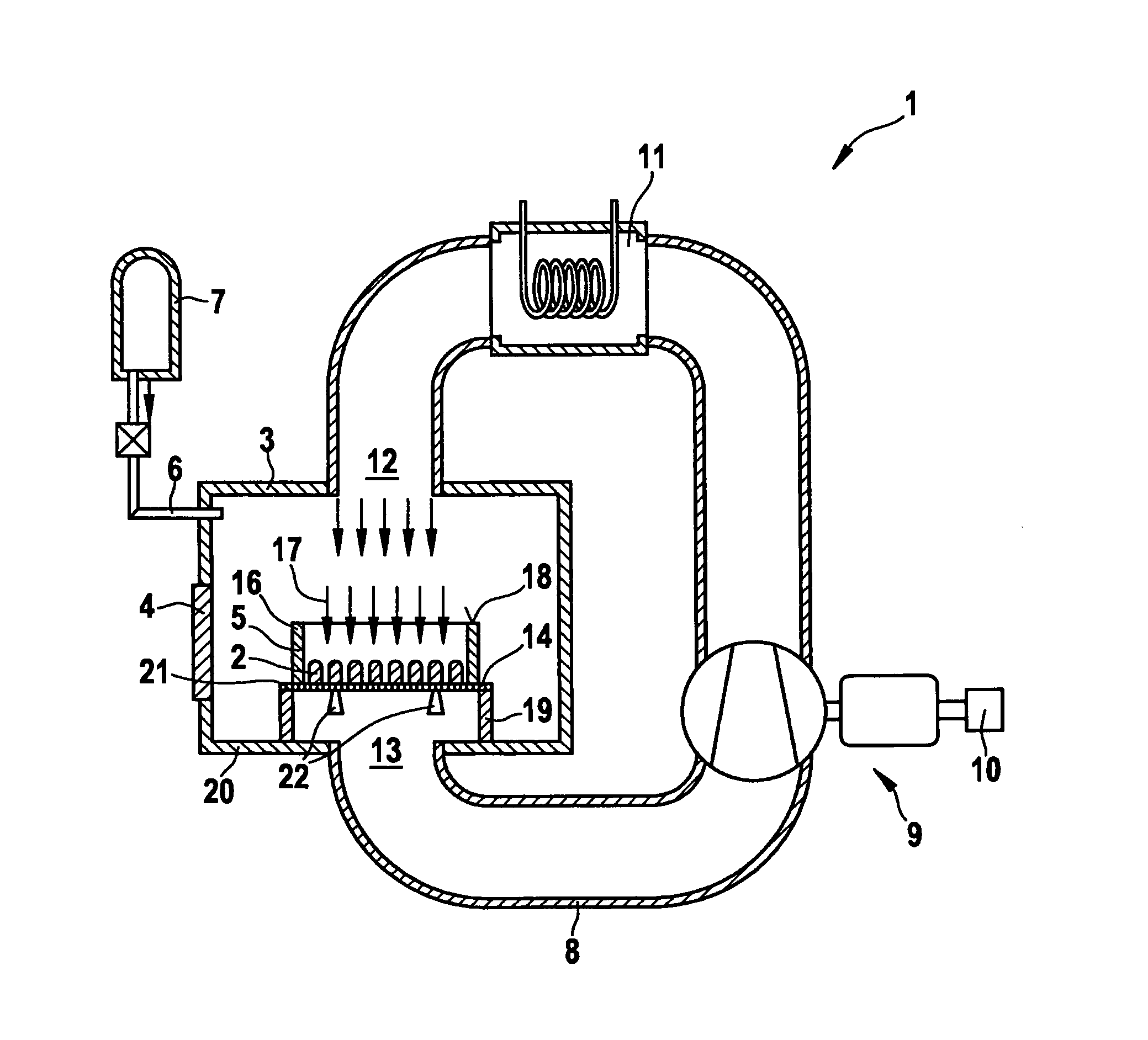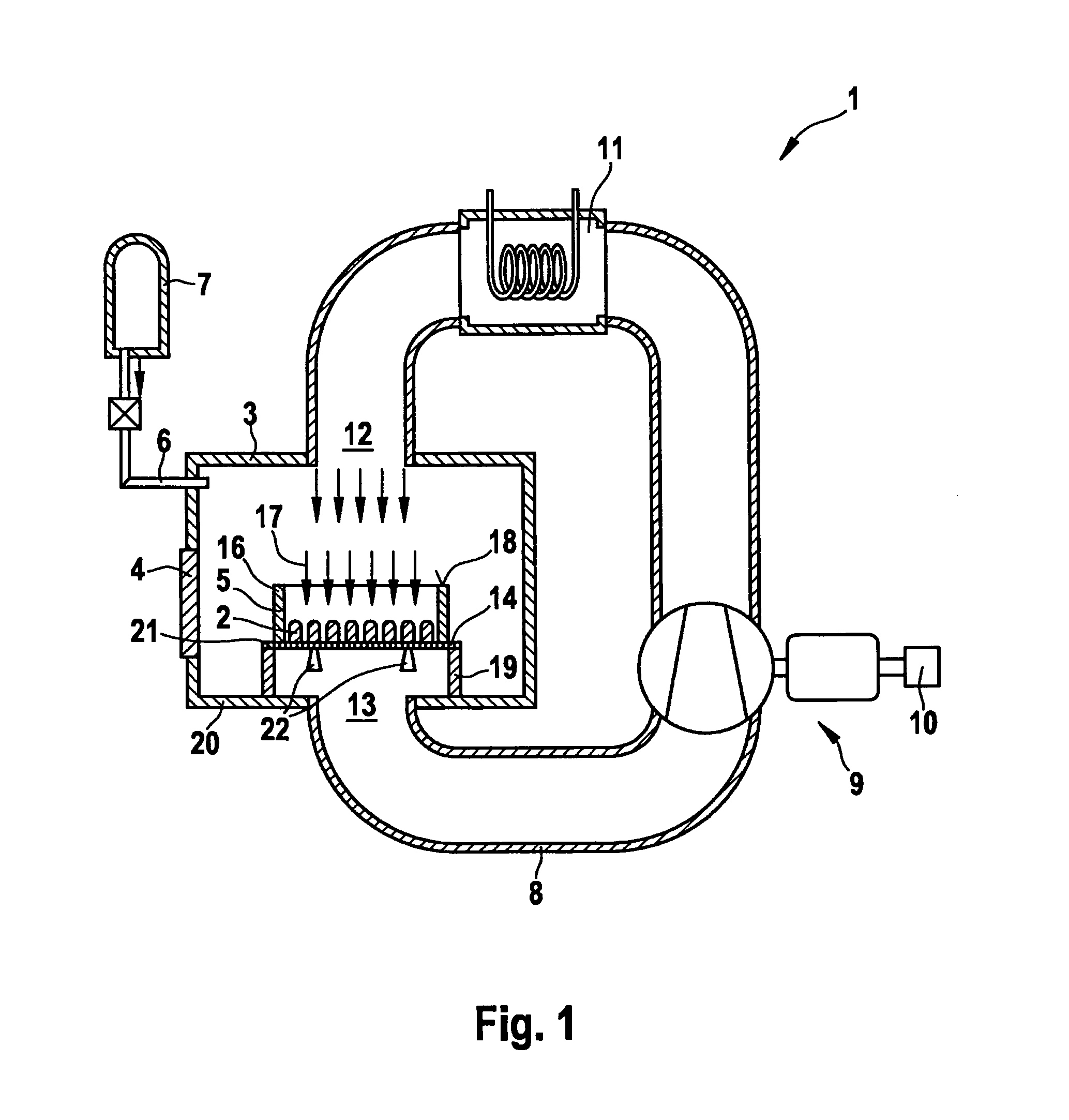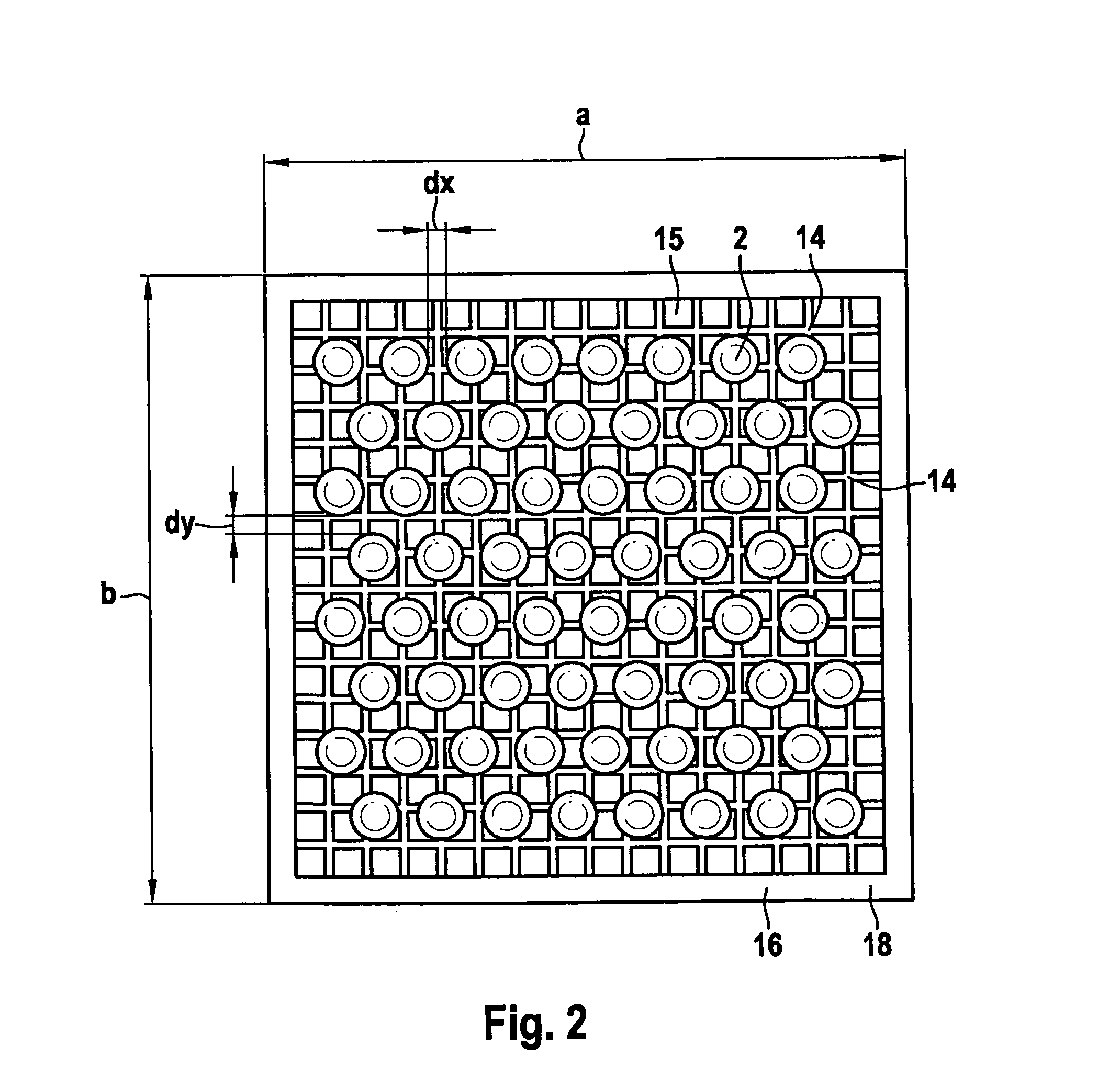Charging frame and quenching device having a charging frame
a charging frame and charging device technology, applied in the field of charging frames, can solve the problems of less effective quenching of the lower layer of parts and higher blower output, and achieve the effects of preventing the flow of quenching gas out of the charging frame, simple and cost-effective means, and increasing the intensity of quenching
- Summary
- Abstract
- Description
- Claims
- Application Information
AI Technical Summary
Benefits of technology
Problems solved by technology
Method used
Image
Examples
Embodiment Construction
[0022]In the figures, the same components and components having the same function are identified by the same reference numerals.
[0023]FIG. 1 shows a quenching device 1 for quenching parts 2, in this case metal workpieces. Quenching device 1 includes a quenching chamber 3 which has a pressure-tight door 4 (loading door) for loading and unloading quenching chamber 3 with the aid of a charging frame 5 which carries parts 2 and is made of a carbon fiber-reinforced carbon. A pressure gas line 6 for supplying quenching gas from a high pressure tank 7 empties into quenching chamber 3.
[0024]A flow channel 8, which forms a flow circuit for the quenching gas together with quenching chamber 3, is fluidically connected to quenching chamber 3.
[0025]A blower 9, which is designed as a radial blower, is situated in flow channel 8, a rotational speed control device 10 being assigned to this blower 9.
[0026]A heat exchanger 11 for removing heat from the quenching gas is furthermore located in flow cha...
PUM
| Property | Measurement | Unit |
|---|---|---|
| pressure | aaaaa | aaaaa |
| heat | aaaaa | aaaaa |
| rotational speed | aaaaa | aaaaa |
Abstract
Description
Claims
Application Information
 Login to View More
Login to View More - R&D
- Intellectual Property
- Life Sciences
- Materials
- Tech Scout
- Unparalleled Data Quality
- Higher Quality Content
- 60% Fewer Hallucinations
Browse by: Latest US Patents, China's latest patents, Technical Efficacy Thesaurus, Application Domain, Technology Topic, Popular Technical Reports.
© 2025 PatSnap. All rights reserved.Legal|Privacy policy|Modern Slavery Act Transparency Statement|Sitemap|About US| Contact US: help@patsnap.com



